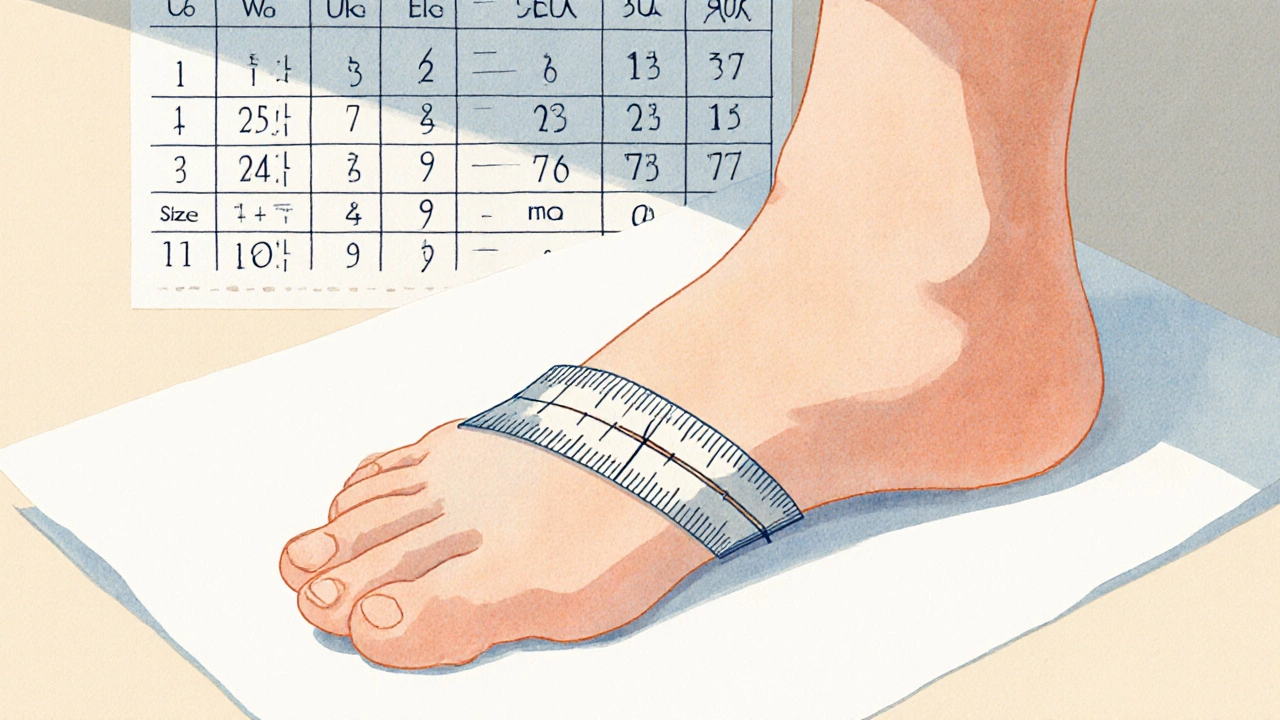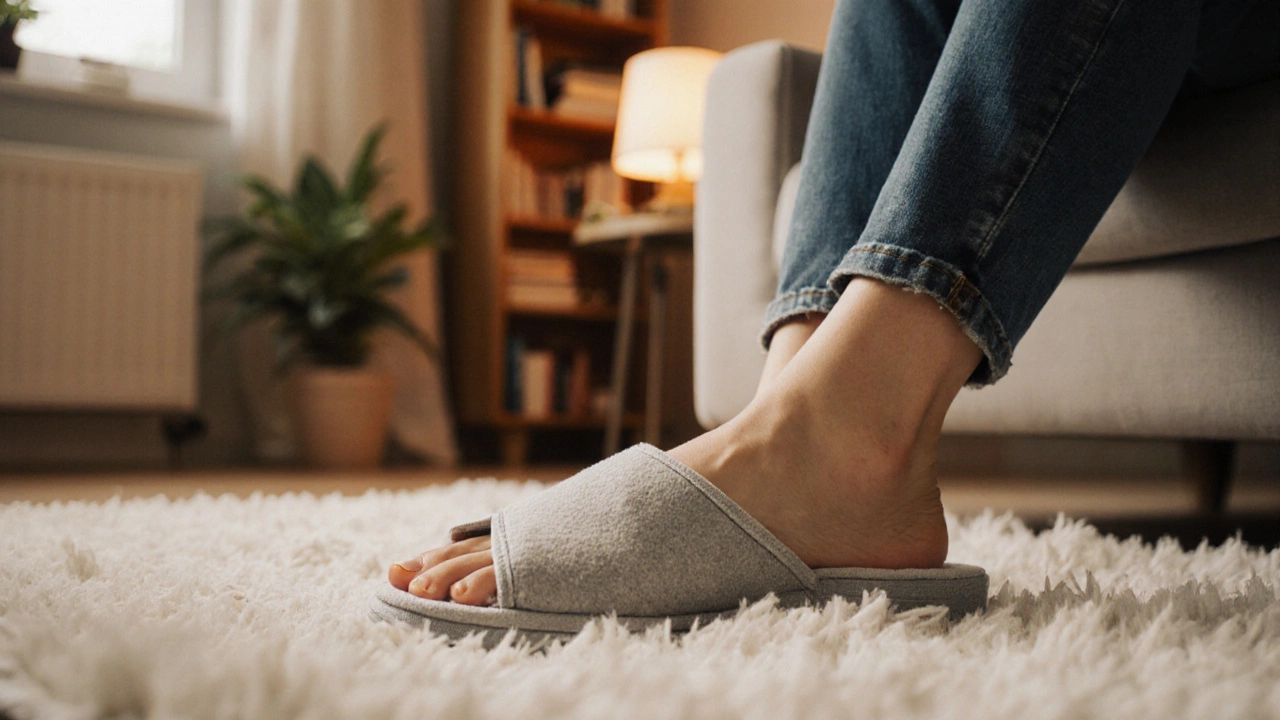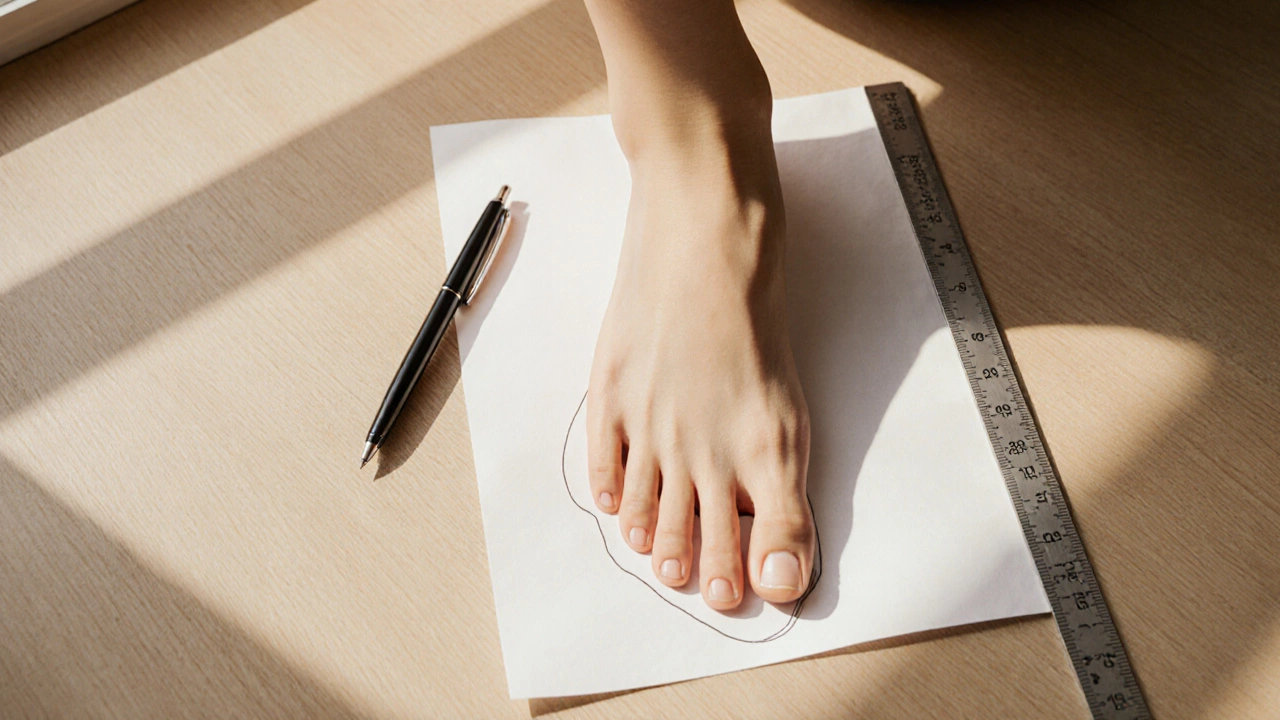Slipper Size Converter
Measure Your Foot
For best results, measure both feet and use the larger measurement. Measure on a hard surface with weight evenly distributed.
Your slipper size recommendations
Important: Always check the specific brand's sizing chart as sizes can vary between manufacturers. If your foot is between sizes, choose the larger size for comfort.
Finding the perfect pair of slippers is all about getting the right fit. Too tight and they dig into your skin; too loose and they slip off the moment you stand. Below is a step‑by‑step guide that walks you through measuring your foot, decoding size charts, and choosing the most comfortable pair for everyday wear.
Why the right size matters
When a slipper matches your foot size, three things happen: comfort improves, foot health stays intact, and the slippers last longer. A well‑fitted slipper supports your arch type, reduces friction, and prevents blisters. Even a small mis‑measurement can cause heel slippage, which leads to trips or uneven weight distribution.
How to measure your foot at home
Grab a piece of plain paper, a pen, and a ruler. Follow these three simple steps:
- Place the paper on a hard floor (carpet works, but a solid surface gives a truer reading). Stand upright, weight evenly distributed, and trace the outline of each foot. Keep the pen upright; an angled line inflates the length.
- Using a ruler, measure the distance from the heel point to the longest toe (often the big toe, but occasionally the second toe). This distance is your insole length. Write it down in centimeters or inches.
- Measure the width: place a ruler across the widest part of the foot outline. Note this number as your foot width. Most slipper brands list width ranges (narrow, regular, wide) alongside length.
Do this for both feet; most people have a slight size difference. Use the larger measurement for buying. If the reading lands between two sizes, always round up - a snug but not tight fit is the sweet spot.
Understanding size charts
Manufacturers publish size charts in various standards: US, UK, EU, and sometimes Australia (AU). Below is a quick reference that converts an insole length of 25 cm into the most common size systems. Pay attention to the foot width column; if you’re a wide‑footed person, look for the next size up in the width category.
| Insole Length (cm) | US Size | UK Size | EU Size | AU Size | Width |
|---|---|---|---|---|---|
| 22.5 | 5 | 4.5 | 36 | 5 | Regular |
| 23.0 | 5.5 | 5 | 36.5 | 5.5 | Regular |
| 23.5 | 6 | 5.5 | 37 | 6 | Regular |
| 24.0 | 6.5 | 6 | 37.5 | 6.5 | Regular |
| 24.5 | 7 | 6.5 | 38 | 7 | Regular |
| 25.0 | 7.5 | 7 | 39 | 7.5 | Regular |
| 25.5 | 8 | 7.5 | 40 | 8 | Regular |
| 26.0 | 8.5 | 8 | 40.5 | 8.5 | Regular |
| 26.5 | 9 | 8.5 | 41 | 9 | Wide |
| 27.0 | 9.5 | 9 | 42 | 9.5 | Wide |
Remember, each brand may have a half‑size or quarter‑size tweak. When you see a note like "Fits US 8‑8.5," treat it as a range and pick the size that aligns with your measured insole length.

Special considerations beyond length
- Arch type: Flat‑footed users often benefit from slippers with built‑in arch support. If you have a high arch, look for cushioned footbeds that cradle the curve.
- Heel height: Some house‑slippers feature a slight heel (up to 1 cm) to reduce pressure on the Achilles. If you have calf tightness, a low‑heel slipper can feel more comfortable.
- Sock thickness: Thick wool socks add a centimeter or two to your foot’s effective length. If you plan to wear slippers with socks, add 0.5 cm to your measured insole length.
- Foot swelling: Feet expand after a day of standing or in warm environments. If you know your feet swell, choose the next half‑size up to accommodate the change.
Tips for buying slippers online
Online shopping removes the trial‑and‑error of the store aisle, but you need to be extra careful:
- Check the return policy. Look for free returns within 30 days - that way you can test the fit at home.
- Read customer reviews for insights on true‑to‑size claims. Phrases like "runs small" or "true to size" are gold.
- Look for product images that show the slipper on a foot with a measurable object (like a ruler). It helps you gauge actual dimensions.
- Prefer brands that list both length and width. If a brand only gives a single number, you risk buying a pair that’s too narrow.

Common mistakes to avoid
Even seasoned shoppers slip up. Here are a few pitfalls and how to dodge them:
- Using shoe size instead of insole length: A shoe size includes outsole space for toe movement, which isn’t needed in a snug slipper.
- Ignoring foot width: A narrow foot in a regular‑width slipper can feel tight, while a wide foot in a narrow fit will slip off.
- Skipping the heel measurement: Some slippers have a high‑rise cuff; your heel height must clear the interior to avoid pressure.
- Relying solely on brand size labels: Sizes vary by region and by brand. Always compare the chart to your own measurements.
Quick reference checklist
- Measure both feet on paper, note the larger insole length.
- Convert the length using the chart above (US/UK/EU/AU).
- Check width - choose regular or wide based on the paper width measurement.
- Factor in socks (+0.5 cm) and swelling (+0.5 cm if needed).
- Read reviews for fit notes, verify return policy.
Frequently Asked Questions
How often should I re‑measure my foot for slippers?
Foot size can change with age, weight fluctuations, or pregnancy. Re‑measure at least once a year, or whenever you notice a change in shoe comfort.
Can I use my regular shoe size to buy slippers?
It’s risky. Slippers are meant to hug the foot, so they usually require a half‑size larger than your standard shoe, especially if you plan to wear thick socks.
What if my foot width falls between "regular" and "wide"?
Opt for the wider option. A slightly roomy fit is more comfortable than a tight squeeze, and many slippers have flexible materials that stretch.
Do I need to consider heel height when buying slippers?
If you have Achilles tendon issues or like a little lift, choose slippers with a modest heel (up to 1 cm). Otherwise, flat soles give the most natural feel.
Are size charts the same across all slipper brands?
No. Each brand may interpret the same EU number slightly differently. Always compare the brand’s specific chart to your measurements.
Getting the right foot size for slippers boils down to a simple measurement, a quick chart lookup, and a few extra checks for width, socks, and swelling. Follow the steps above, and you’ll walk into home comfort with confidence.
